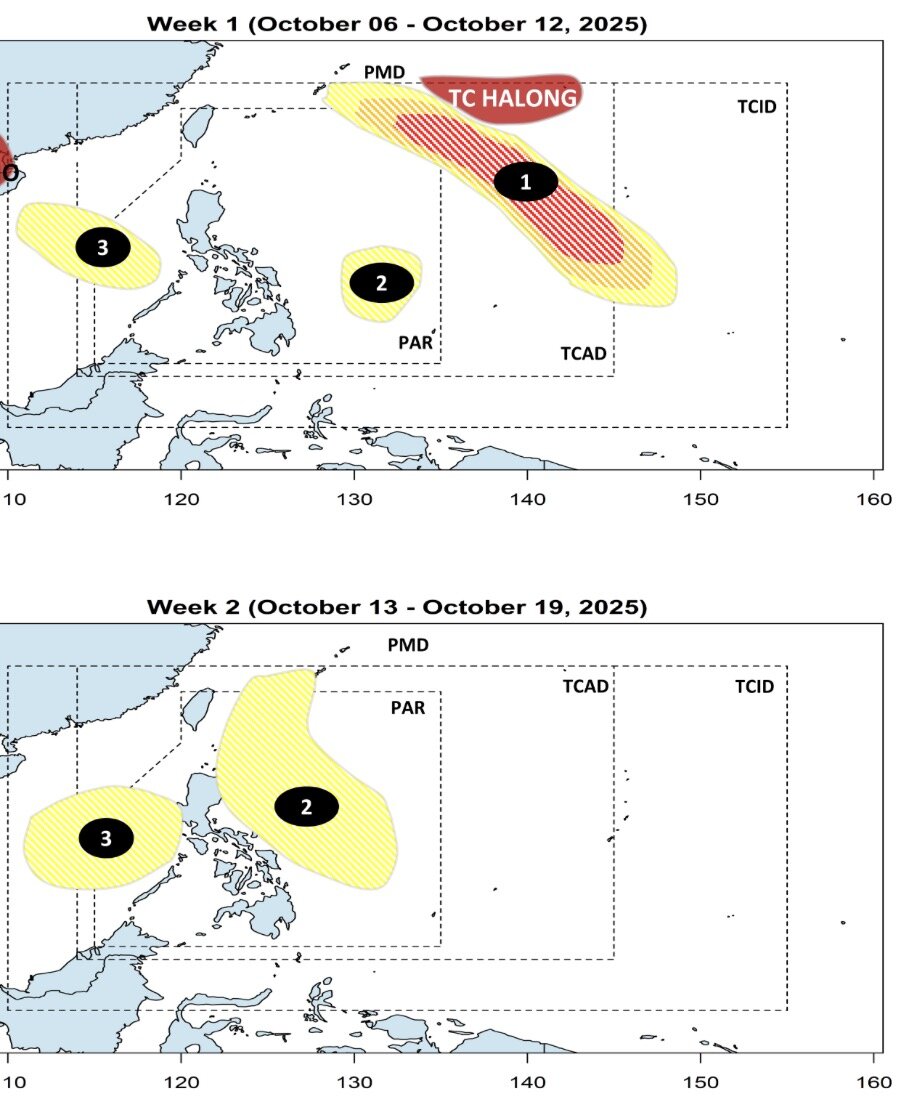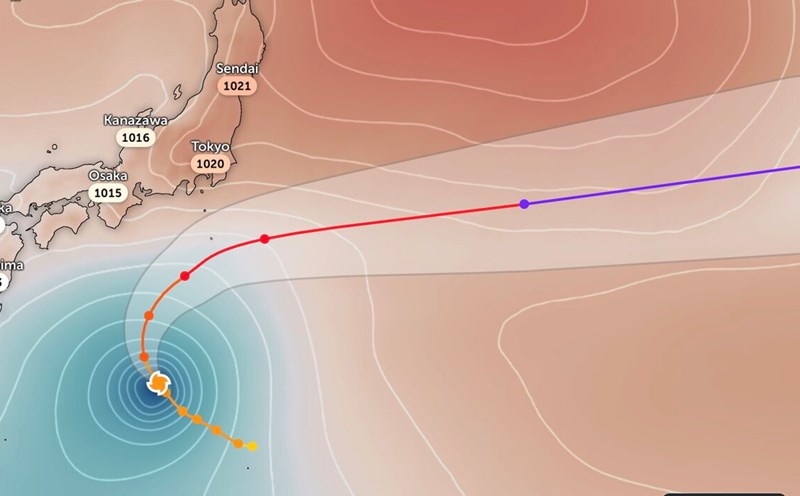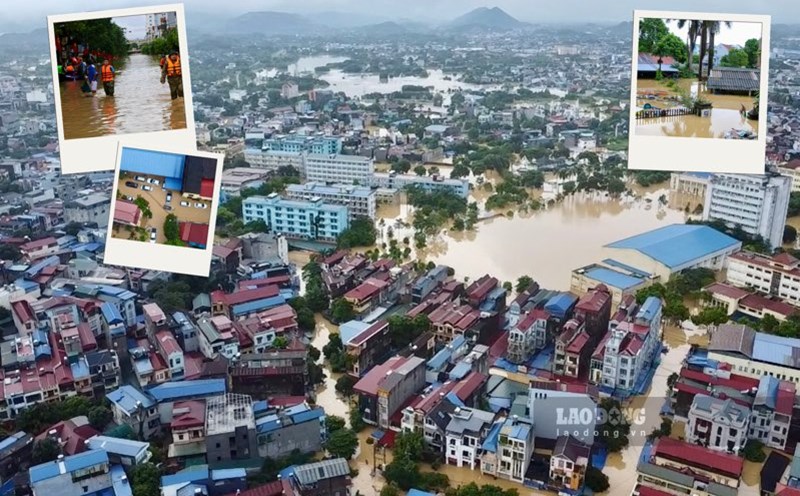The latest storm and low pressure information from the Philippine Atmospheric, Geophysical and Astronomical Services Administration (PAGASA) said that Typhoon Ha Long is currently outside the Philippine Forecast Area (PAR) and is not expected to directly affect the country.
Meanwhile, the new low pressure area that PAGASA has been monitoring outside the PAR has strengthened into a tropical depression.
At 2:00 a.m. on October 8, the tropical depression was 1,985 km east of Luzon, with maximum sustained winds of 55 km/h and gusts of up to 70 km/h. The tropical depression is moving northwest at a speed of 15 km/h.
"This tropical depression will cross or enter part of the Philippine forecast area. We also do not rule out the possibility that this system could enter the PAR region in a short time or temporarily enter and then move far away," PAGASA weather forecaster Loriedin De La Cruz said in a bulletin at 5:00 a.m. on October 8.
Philippine weather forecasters say that like Typhoon Ha Long, the new tropical depression is unlikely to affect the weather in the Philippines.
The new tropical depression is also being monitored by the US Navy's Joint Typhoon Warning Center (JTWC), named Invest 95W.
The latest news from JTWC said that the new tropical depression is active in the Philippine Sea and is likely to strengthen further in the next 24 hours.
Area analysis shows that weather conditions are favorable for the development of this depression, with low wind shear and warm sea surface temperatures. The forecast model of the European Center for Medium-term Weather Forecasts (ECMWF) shows that this low pressure will strengthen steadily in the next 24 hours.
Regarding the track, global models agree that the new low pressure will move northwest, with maximum sustained surface winds of about 45-55 km/h.

Previously, according to PAGASA's short-term storm forecast released on October 6, in addition to Typhoon Ha Long, PAGASA forecasted two more depressions in the area around the East Sea from October 6 to October 19.
Of which, the low pressure near the East Sea is forecast to form within the PAR during the week of October 6 to 12 and continue to strengthen, approaching the Philippines during the week of October 13 to 19.
Similarly, a low pressure in the East Sea is also forecast to form during the week of October 6 to 12 and continue to expand its range of activities in the East Sea from October 13 to 19.











